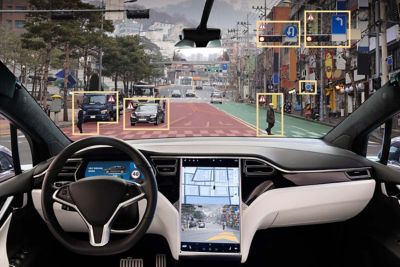-
United States -
United Kingdom -
India -
France -
Deutschland -
Italia -
日本 -
대한민국 -
中国 -
台灣
-
Ansys는 학생들에게 시뮬레이션 엔지니어링 소프트웨어를 무료로 제공함으로써 오늘날의 학생들의 성장을 지속적으로 지원하고 있습니다.
-
Ansys는 학생들에게 시뮬레이션 엔지니어링 소프트웨어를 무료로 제공함으로써 오늘날의 학생들의 성장을 지속적으로 지원하고 있습니다.
-
Ansys는 학생들에게 시뮬레이션 엔지니어링 소프트웨어를 무료로 제공함으로써 오늘날의 학생들의 성장을 지속적으로 지원하고 있습니다.
ANSYS BLOG
December 28, 2022
Optics & Photonics Industry Insights: Automotive
In late October I had the wonderful opportunity to attend a summit co-hosted by Optica and the Consortium for On-Board Optics (COBO) on the topic of co-packaged optics (CPO) and pluggable optics.1 The event centered on optical technologies needed by hyperscale cloud providers (e.g., Google, Microsoft, and Meta) to support increasing bandwidth and performance requirements of data centers.
It was fascinating to listen to industry experts debate the merits of CPO versus pluggable optics. While co-packaged optics present a strong advantage in terms of minimizing power consumption — a critical requirement for next generation data centers — pluggable optics represent a tried-and-true technology that still has room for advancement. In fact, in some (if not many) cases, companies are using the same technology for the development of their pluggable optics solutions as for their CPO solutions.2
An interesting hypothesis shared during the summit was that, at least in the near term, more opportunities may be found for CPO in new and emerging technology spaces rather than in data centers. This is because hyperscale cloud providers may be unwilling to invest in the research and development required to use co-packaged optics until CPO has been commercialized in other applications. One suitable application for CPO is automotive lidar.

Lidar systems are seen as critical by many for the advancement of autonomous vehicles from current levels of autonomy (levels 2+; advanced partial automation) to the desired Level 4 (high automation) and Level 5 (full automation). Although lidar has been successfully demonstrated in the market,3 challenges remain in reducing the size and cost of lidar systems while increasing their performance, reliability, and safety. The industry has adopted solid state technology as a first step toward addressing these challenges,4-5 but increasingly the long-term solution points toward the use of silicon photonics and co-packaged optics.6 One example includes Mobileye, the autonomous driving subsidiary of Intel, which will be using photonic integrated circuits (PICs) to power their next generation of lidar sensors and expects to have these deployed by 2025.7 Other lidar companies are expected to follow suit soon, if they have not done so already.
There is a growing sense in the industry that lidar is poised to move from promise and potential to full-scale production and deployment. But there are still technological challenges to be overcome. A key to understanding those challenges and finding their solution is simulation. I recently led a panel with Thomas Kümpfel from TKL Engineering and my fellow product leaders, Julien Muller and James Pond from Ansys Optics, in which we discussed recent innovations in the automotive industry and the role of simulation in driving these innovations.8 The miniaturization of lidar systems was one of several hot topics, and we agreed that the ability to model these systems from the PIC level to the system level is critical for engineers to create robust and scalable designs. That such simulation capabilities exist today is one of many reasons for the optimism regarding the future of autonomous vehicles that is permeating the automotive industry.

As we move toward a fully autonomous future, one of the key aspects will be "interconnectedness" — the need for each vehicle on the road to know about every other vehicle. This real-time communication network will require a high bandwidth infrastructure in the cloud, which will require high performance data centers to support it. So, even for the new and emerging technology that is autonomy, the role of integrated photonics and CPO in the data center will be critical.
We are an exciting time in the optics industry, and there is an opportunity for significant changes that will propel the next generation of technological advancements in a variety of markets — automotive included. I am honored to be a part of the journey and cannot wait to see where we go next.
Learn More
- Ansys Optics uniquely simulates a system’s optical performance and evaluates the final illumination effect, predicts and validates the impact of lighting and material variations on appearance and perceived quality all in real conditions.
- Ansys Lumerical's comprehensive suite of photonics simulation and analysis tools offers component-level and system-level simulations to optimize performance, minimize physical prototyping costs and reduce time-to-market.
- Exponentially innovate to deliver the transportation and mobility experiences of the future with the next generation of Ansys simulation and engineering tools.










